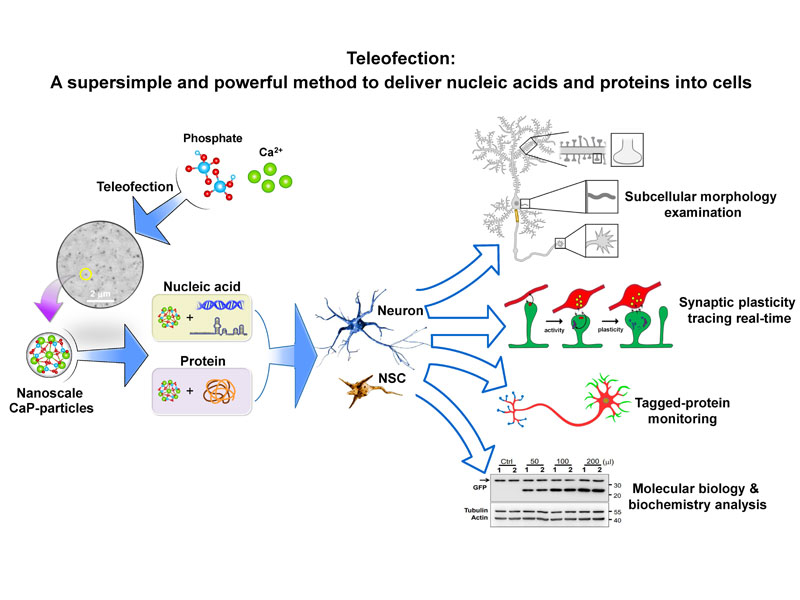Improved CaP Nanoparticles for Nucleic Acid and Protein Delivery to Neural PrimaryCultures and Stem Cells
Dr. Hsueh, Yi-Ping - February, 2024
Efficiently delivering exogenous materials into primary neurons and neural stem cells (NSCs) has long been a challenge in neurobiology. Existing methods have struggled with complex protocols, unreliable reproducibility, high immunogenicity, and cytotoxicity, causing a huge conundrum and hindering in-depth analyses. Here, we establish a cuttingedge method for transfecting primary neurons and NSCs, named teleofection, by a two-step process to enhance the formation of biocompatible calcium phosphate (CaP) nanoparticles. Teleofection enables both nucleic acid and protein transfection into primary neurons and NSCs, eliminating the need for specialized skills and equipment. It can easily fine-tune transfection efficiency by adjusting the incubation time and nanoparticle quantity, catering to various experimental requirements. Teleofection’s versatility allows for the delivery of different cargos into the same cell culture, whether simultaneously or sequentially. This flexibility proves invaluable for long-term studies, enabling the monitoring of neural development and synapse plasticity. Moreover, teleofection ensures the consistent and robust expression of delivered genes, facilitating molecular and biochemical investigations. Teleofection represents a significant advancement in neurobiology, which has promise to transcend the limitations of current gene delivery methods. It offers a user-friendly, cost-effective, and reproducible approach for researchers, potentially revolutionizing our understanding of brain function and development.
